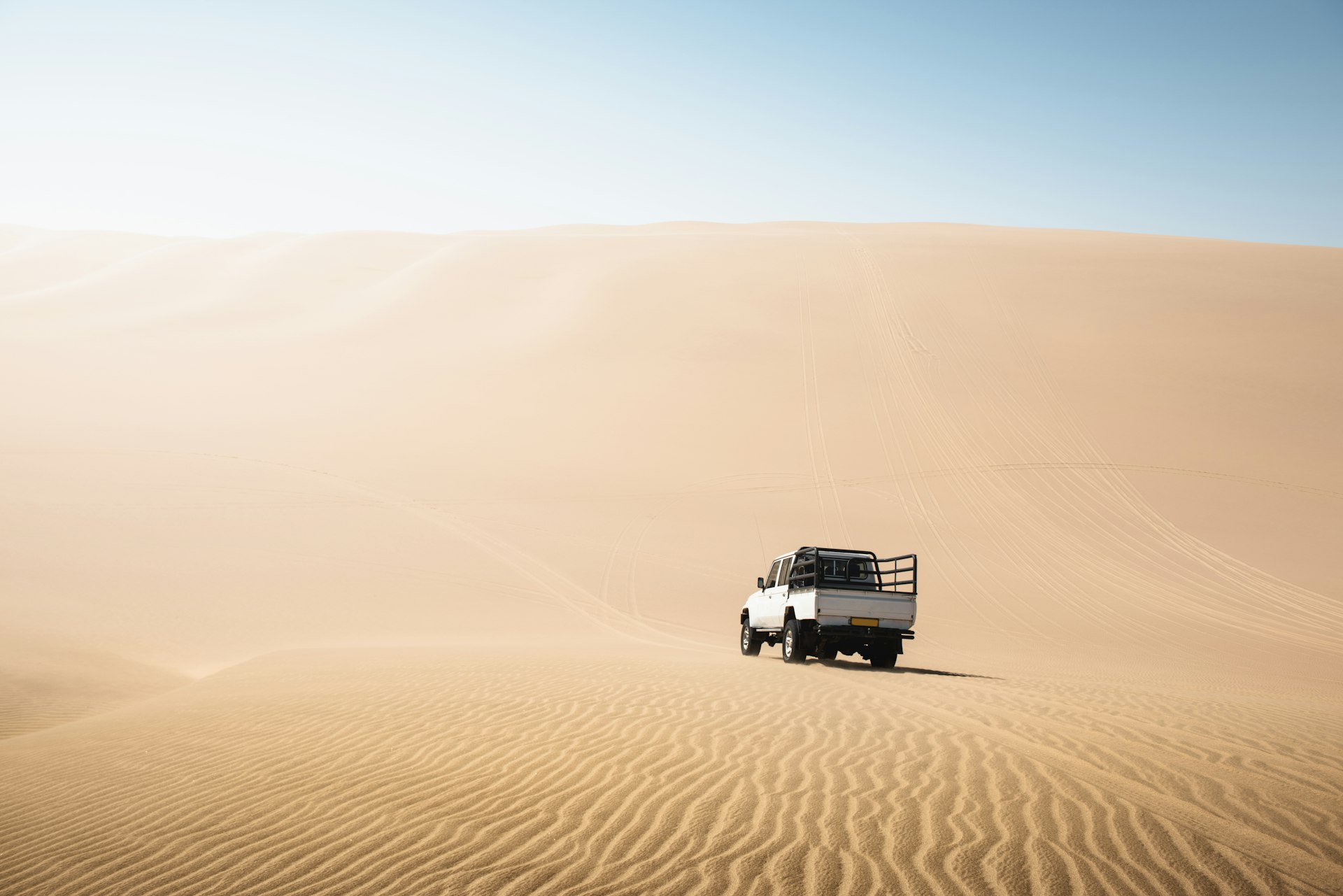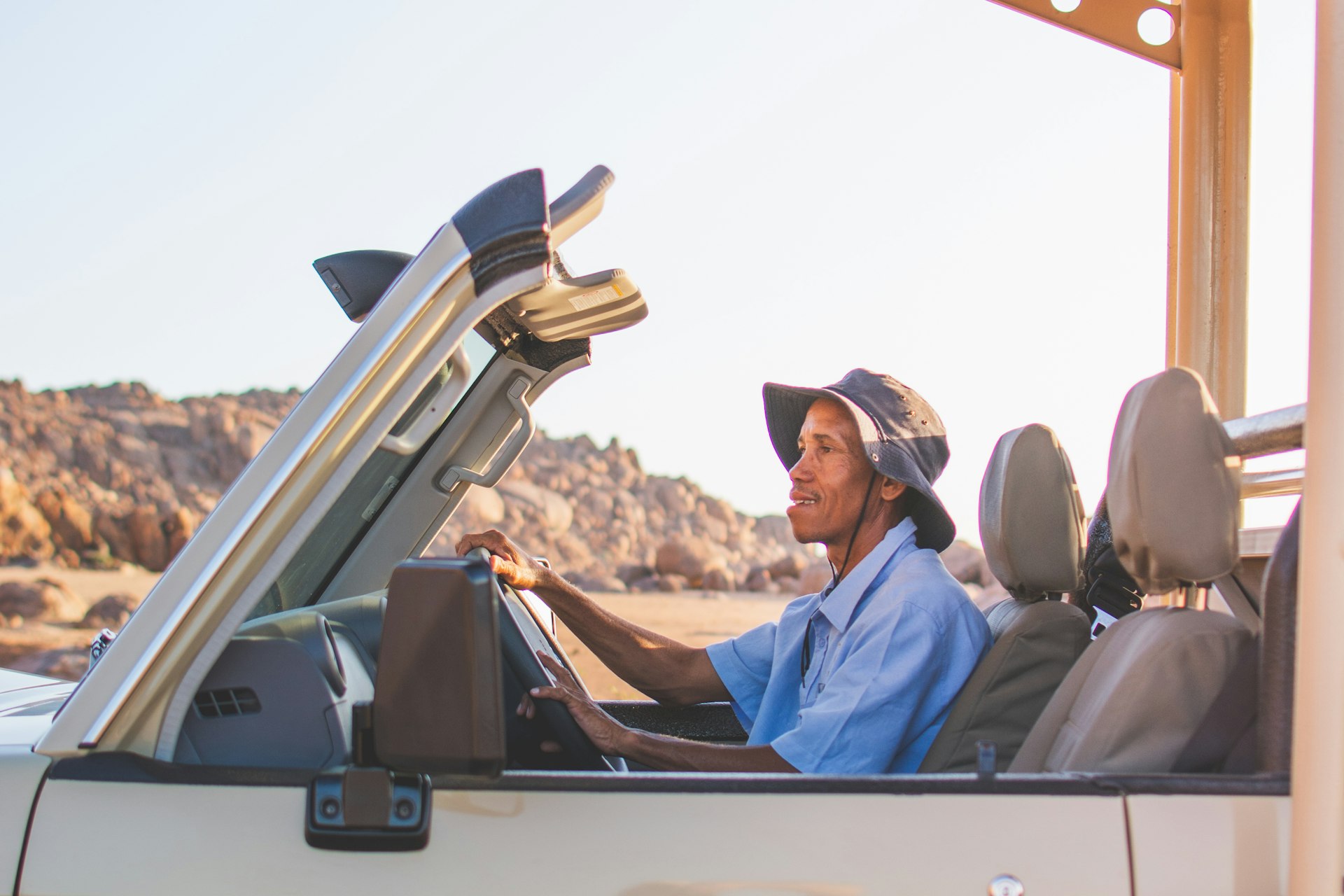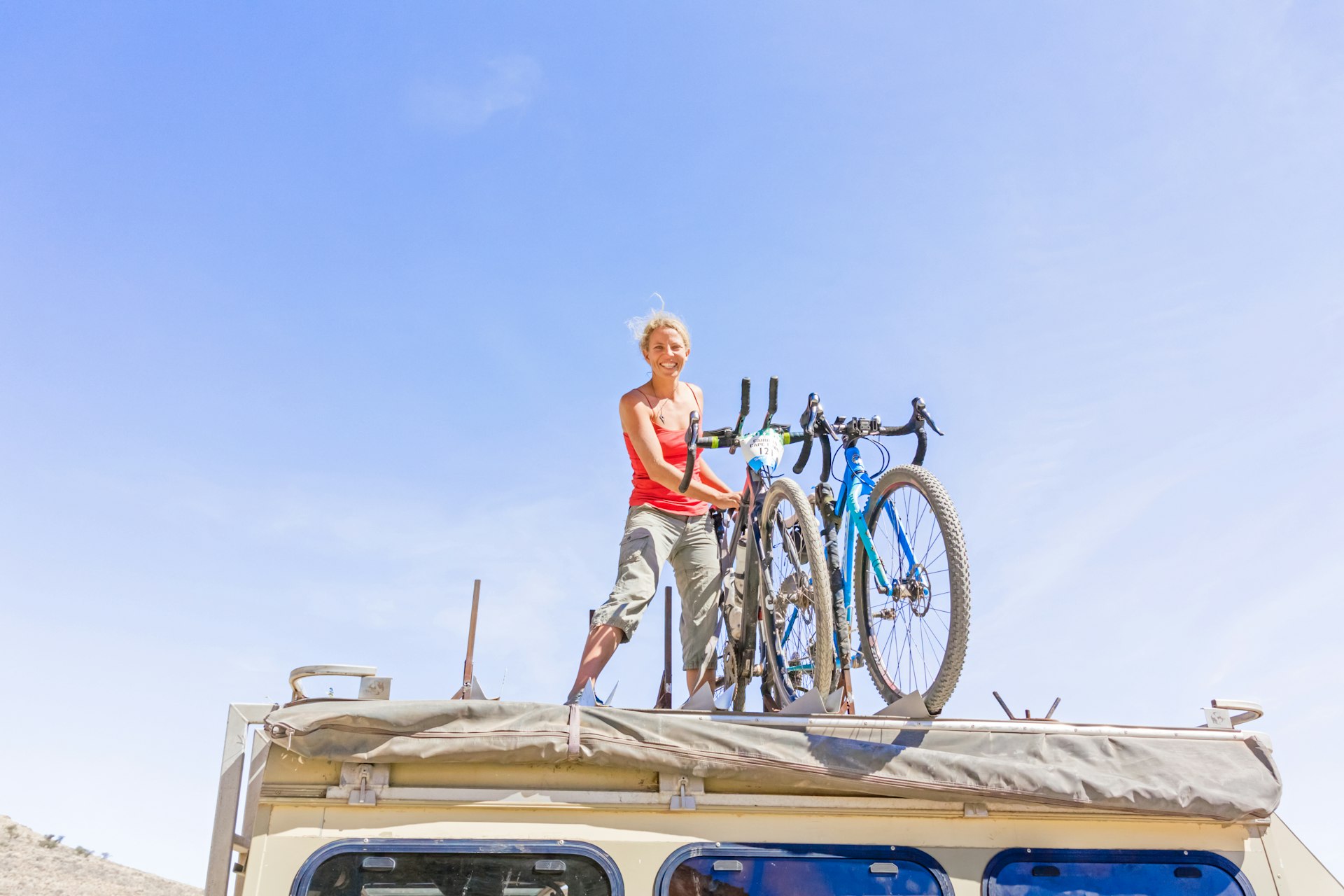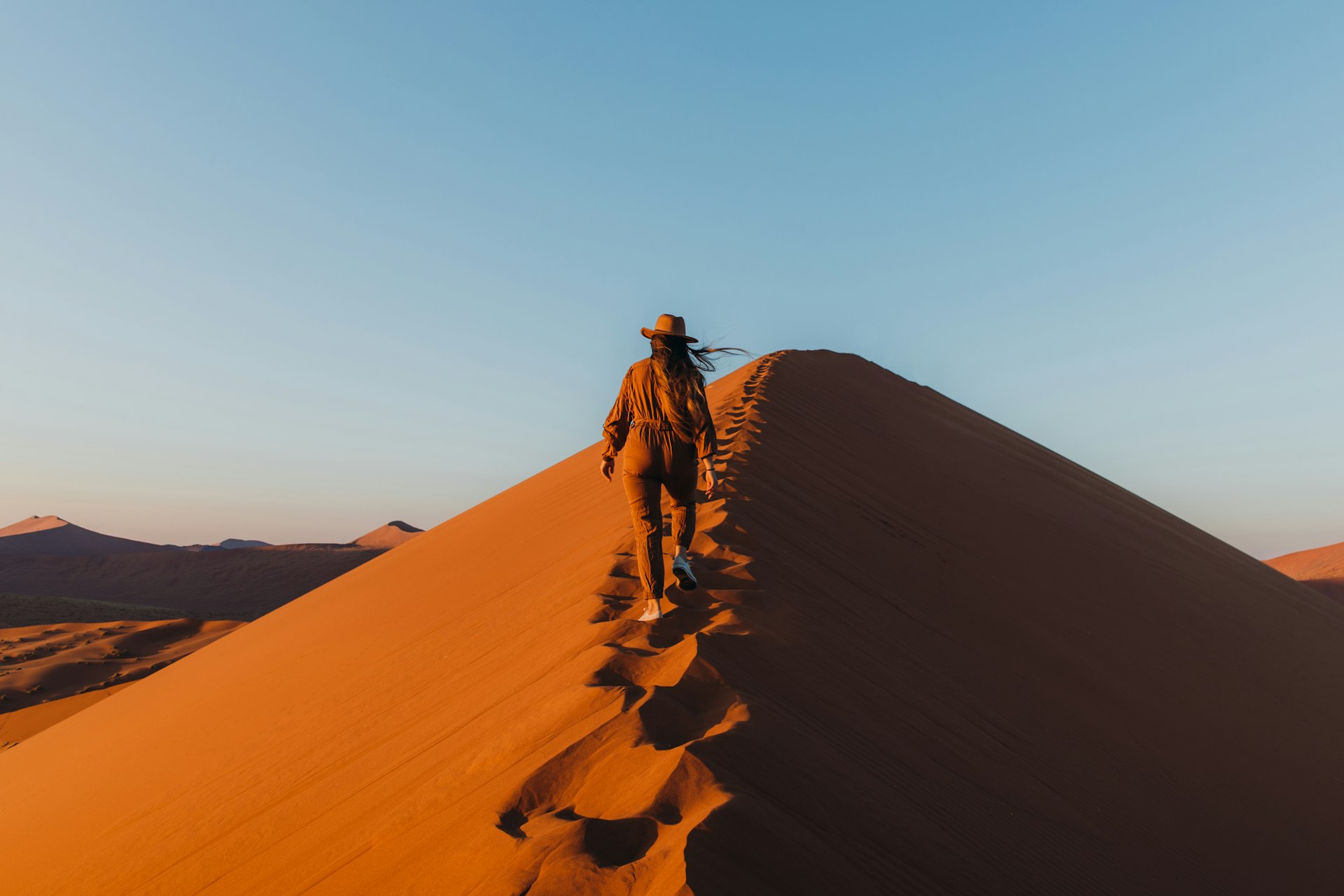There aren’t many places where you can drive for hours on beautiful, open roads without seeing anything other than the occasional oryx. Namibia offers this kind of travel in abundance.
Covering 825,418 sq km (318,695 sq miles), the 15th largest nation on the African continent is one-and-a-half times bigger than France. Getting around is part of the adventure.
Plan it right and it can even be the highlight of your visit. Here’s how to get around Namibia.
Take the bus for long-distance trips
Buses are a good budget option for traveling long distances in Namibia as they have few stops. The South Africa-based Intercape line is reliable and offers several routes in Namibia. A ticket from Windhoek to Noordoewer (on the border with South Africa) starts from N$700. From Windhoek to Oshakati (near the Angolan border), you’ll pay about N$400.
Minibuses go everywhere; use shuttles to get to the coast
Shared minibuses – the major mode of travel for many Namibians – run between every major town in the country. They leave when full and prices vary from N$100 to N$350 for most routes.
Pre-booked private shuttle services operate between Windhoek, Swakopmund, Walvis Bay, and several other town centers. They are more comfortable and efficient than shared minibuses. Operators include Welwitschia, McClune’s, and Carlo’s Shuttle. Expect to pay about N$280 one-way for a shuttle between Windhoek and Swakopmund. For all buses and shuttles, arrive early for a seat on the shady side of the vehicle.

Rent a 4WD for access and flexibility
The best way to explore Namibia is to self-drive. The country has an extensive network of paved arterial roads and well-maintained gravel routes. Vehicle rental is straightforward and reasonably priced, especially during the off-season. During the high season (July through October), rental agencies sell out – book in advance. Expect to pay about US$550 per week for a mid-sized 2WD vehicle and US$650 per week for a 4WD. A 4WD with a rooftop tent starts from US$700 per week. A full range of international rental companies operate in Namibia, including Avis, Hertz, and Thrifty. Local companies to try include Savanna Car Hire and Safari Car Rental.
Although a 4WD isn’t necessary for most major destinations, we recommend renting a vehicle with high clearance. This will make Namibia’s long stretches of gravel more comfortable and easier to negotiate. When considering insurance coverage, keep in mind that gravel is rough on vehicles, especially on tires and windshields. Learn in advance how to change a tire, always fill up when passing a gas station, and carry extra drinking water.
If you’d rather let someone else do the driving, expect to pay from US$150 to US$400+ a day for an organized tour with a driver/guide. Companies include Chameleon Safaris, which has scheduled weekly departures that can be ideal for solo travelers. Karibu Namibia, Comfort Safaris & Tours, Ekipa Travel, and Sense of Africa all offer bespoke safaris.
For stunning views, try a flying safari
For travelers with larger budgets, a handful of companies take advantage of Namibia’s clear skies to run scenic flights, especially in the Sossusvlei area and along the coast. Though there’s a carbon cost, these flights offer beautiful views and a unique aerial perspective on the country’s striking juxtaposition of desert and ocean. Companies to try include African Bush Bird and Scenic Air. FlyNamibia provides scheduled and charter flights connecting Windhoek with various destinations around the country.

Shared taxis are the cheapest option in cities and towns, but private taxis are safer and more efficient
Namibia’s main ride-hailing service is Lefa, which operates in Windhoek. There is also a shared taxi system in all major towns, which offers an economical way of getting around and is extensively used by locals. Shared taxis are prominently marked, and you’ll also recognize them by the constant honking of drivers looking for passengers. If you want to do this, tell the driver your destination before getting in; if the vehicle is heading your way and has space, the driver will take you. Fares are inexpensive (between N$13 and N$39 for short journeys), but note that drivers sometimes take circuitous routes to drop off other passengers, service is to neighborhoods rather than door-to-door and driving standards aren’t the highest.
Private, non-shared taxis are generally a better and safer option and also reasonably priced. Fares start at about N$100 for short trips within Windhoek. Private taxis are normally booked in advance, rather than hailed, and their service is door-to-door. One of the larger companies is Dial-a-Cab, or ask staff at your accommodations for a recommendation.

Cycling is a great way to explore for self-sufficient travelers
If you’re reasonably fit and can sort out the logistics, Namibia is a rewarding destination for cyclists. It has a dynamic local cycling community, challenging terrain, and a vast network of (largely) empty gravel roads. You’ll need to be highly organized with water, food, and emergency backup plans – don’t fool around with the desert heat. Note too that there are few places between larger towns where you can restock. A pre-arranged bike tour with a company such as Mabaruli is a good choice for first-time visitors.
Kayak the coast, canoe the rivers, boat the inland waterways
Sea kayaking and boat tours are popular in Walvis Bay and Lüderitz. They give travelers a chance to spot seals, penguins, flamingos, and other coastal wildlife. In northern Namibia, river cruises along the Okavango, Zambezi, and Kunene rivers are a relaxing way to appreciate local wildlife and sunsets. In the south, try a multi-night canoe trip along the Orange River.
Accessible travel in Namibia
For those with limited mobility, private vehicle-based travel is the easiest way to get around Namibia. Several local companies organize accessible tours, and the minivans and safari vehicles used by Namibia-based tour companies generally accommodate wheelchairs. Many lodges also have paved footpaths and ground-level rooms without steps.
Helpful websites include Responsible Travel, Disabled Holidays, Endeavour Safaris, Access2Africa Safaris, Extraordinary Journeys, and Blue Baobab Safari. All offer accessible itineraries in Namibia and the region.
For more online resources, download Lonely Planet’s free accessible travel resources.
